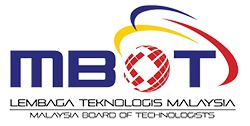Thermal Evaporation as a Sustainable Solution for Landfill Leachate Treatment: Removal Efficiency Analysis
Keywords:
Landfill leachate, Evaporation, COD removal, NH3-N reduction, Thermal treatment, Sustainable wastewater managementAbstract
Landfill leachate poses significant environmental challenges due to its high pollutant content, requiring effective treatment to meet regulatory standards. In Malaysia, landfill leachate management often struggles to comply with the Environmental Quality Regulations 2009, prompting the need for alternative technologies. This study investigates the effectiveness of evaporation as a treatment method, focusing on the removal efficiencies of COD, BOD, turbidity, NH3-N, and colour at varying temperatures (120°C, 152°C, 154°C, and 156°C). Results showed COD removal exceeded 98%, achieving 99.6% at 156°C, demonstrating effective degradation of organic pollutants. NH3-N and BOD reductions were 86.7% and 64.6%, respectively, though both remained above discharge limits. Turbidity reductions were substantial, with final values meeting environmental standards. Colour removal was significant at lower temperatures, decreasing to 136 PCU at 120°C but declined at higher temperatures, likely due to the volatilization of chromophoric compounds. The pH consistently decreased with increasing temperature but remained above the upper regulatory limit of 9.0, necessitating post-treatment neutralization. These findings align with recent studies demonstrating the effectiveness of evaporation in reducing COD and turbidity while highlighting its limitations in addressing NH3-N, BOD, and pH compliance. Evaporation shows strong potential as a primary treatment method, particularly for reducing organic pollutants and turbidity, but requires integration with secondary processes for comprehensive leachate management. This study provides valuable insights into optimizing evaporation-based treatments and contributes to the advancement of sustainable leachate management strategies.





